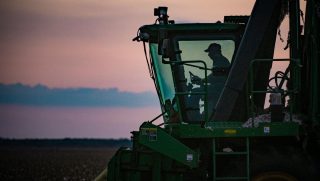Activists are taking the credit for “liberating” thousands of mink from a western Wisconsin fur farm. Meanwhile, authorities are still seeking suspects.
According to the Wisconsin Crime Alert Network, on Aug. 12, someone entered Olsen Fur Farm, located in Lincoln by cutting a hole in the chain link fence surrounding the mink housing. During the nighttime raid, approximately 3,000 mink were freed.
Challis Hobbs, president of the Fur Commission USA, a national nonprofit for fur farmers, told StarTribune that 90 percent of the mink have already been recovered, but nobody has been arrested.
The Trempealeau County Sheriff’s Office is requesting information regarding suspicious vehicles that would have been on State Road 121. Authorities say the trespass likely occurred between 11 p.m. and 3:45 a.m.
According to fox9 news, the Animal Liberation Front, an activist group labeled as an extremist movement by the FBI, shared an anonymous message from the culprit.
The post, in part, reads, “We hope many of the mink enjoy their freedom in the wild and that this farm will be unable to breed thousands upon thousands of them in future years. They have an opportunity now to cut their losses and leave the fur industry forever.”
Although mink are found wild in Wisconsin and Minnesota, mink that are raised on farms are used to being fed balanced, regular diets. The survival of mink not recaptured is likely to be relatively low.
These types of agri-terrorism incidents aren’t new to the mink industry. Just last year, farms in Ohio and Michigan were raided, including one farm in Ohio where over 10,000 mink were set loose. Olsen Fur Farm has also been raided before, including in 1997, when 800 mink were released.
The Trempealeau County Sheriff’s Office is asking anyone who noticed anything unusual on the night of the release to call 715-538-4351.

